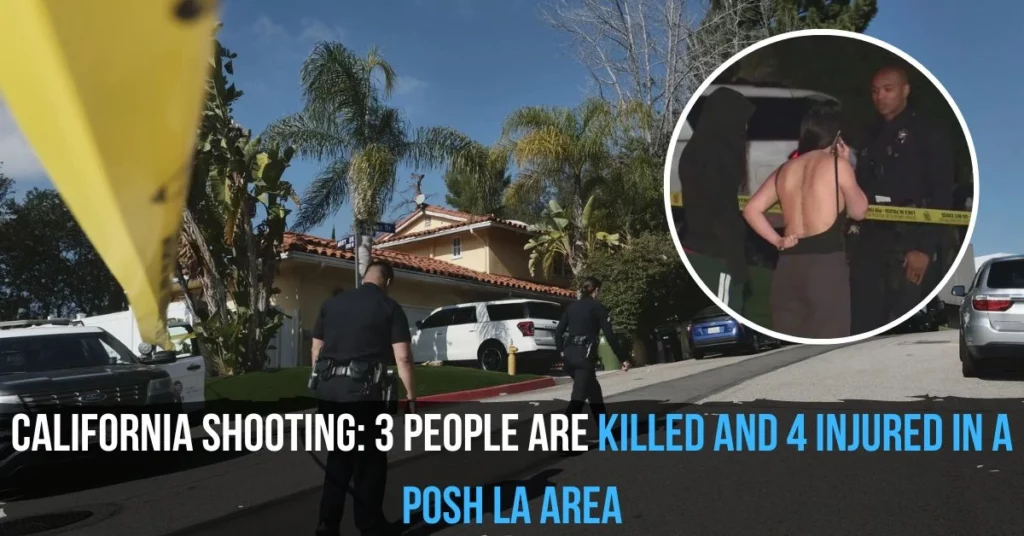The first step to getting your driver’s license in California is taking and passing the written test. Many drivers don’t take it seriously enough and end up failing on their first try. However, the California DMV test just checks if you know the rules of the road and traffic signs. If you study and practice enough well, you should pass easily.
This article will discuss all you need to know to pass your California driving test the first time.
Understand the California Permit Test
The California permit test covers road signs, traffic laws, and general driving rules. All the questions come from the California DMV handbook.
- If you’re under 18, your test will have 46 questions, and you need to answer at least 38 correctly to pass.
- For adults over 18, the test has 36 questions, and you must get at least 30 right to pass.
The DMV wants you to pass. Therefore, going into your test with a positive mindset will help you stay calm and focused, giving you the best chance of success.
How to prepare for your driving test
Before taking your California driver’s license test, it’s essential to practice driving until you feel confident in your skills. Also, try completing practice tests online to familiarize yourself with the questions you might encounter. And, if you are going to get the test as a biker, this website can help you a lot.
You should aim to feel comfortable performing all the maneuvers listed in the California Department of Motor Vehicle’s Safe Driver Checklist.
If you’re under 18, you must practice driving under supervision for at least 6 months. You also need to complete 6 hours of behind-the-wheel training with a licensed instructor and 50 hours of supervised driving practice, including 10 hours at night.
Make sure you know your vehicle well. During the test, the California DMV examiner will ask you to locate:
- Windshield wipers
- Headlights
- Emergency flashers
- Parking brake (and show how to use it)
- Defroster
How to schedule your California DMV written test
Before scheduling your exam, make sure you meet these requirements:
- You’re at least 15.5 years old.
- You’ve completed driver’s education if you’re under 18.
Once that’s sorted, you’ll need to book an appointment for your test. To do this, you should make an appointment at your local DMV office. You can do this by calling 1-800-777-0133 or visiting www.dmv.ca.gov online.
From the California DMV website, you can choose your preferred service. Pick your test location and date. You can change or cancel your appointment using the CA DMV Appointment System.
It’s a good idea to check your test status 24 hours before to make sure everything’s on track.
How to pass the California written test
If you want to ace your driver’s permit test in California, you must understand traffic laws, safety, and road signs. The California Handbook is a treasure trove of useful information about driving rules across the state. You can get a copy for free at your nearest DMV office.
Here are some tips to help you prepare:
- Practice identifying road signs whenever you’re riding as a passenger in a car or bus.
- Create flashcards covering essential road rules and laws.
- Take practice tests provided by the California DMV and thoroughly read the driver’s handbook.
- Start studying well ahead of time to give yourself the best chance of success.
How to prepare for your California DMV visit
When you head to the DMV for your written test, make sure you have these documents ready:
- Proof of Identity
- Proof of Social Security
- $33 for the fee
- Certificate of Driver’s Education Completion (if you’re under 18)
If you’re under 18, don’t forget to bring a parent along to sign your Driver’s License or ID Card Application (DL 44).
Also, don’t forget to bring with you:
- A licensed driver, at least 18 years old.
- Your instruction permit or old driver’s license.
And most importantly, for the driving test, you’ll need a car that meets these requirements:
- Two license plates with current registration.
- The car must have Proof of insurance.
- If you’re using a rental car, have the contract paper showing you as the insured driver.
- Tires without any bald spots.
- Functioning turning signals, horns, brake lights, and parking brakes.
- The windshield must have a clear view.
- At least two rearview mirrors, with one outside on the left side.
- A functioning driver’s side window and driver and front passenger doors.
What happens after your driving test?
Once you finish the California written test on the computer, you’ll get your score right away. If you pass, congrats. You’ll get your CA instruction permit, but you’ll have to follow some rules when driving. This is a good time to practice driving on real roads before the driving test.
If you don’t pass, don’t worry. You can take the test again after waiting for seven days. You have three chances to pass. But if you don’t make it after three tries, you’ll have to start over and pay more fees.
Remember, passing the California written test isn’t hard if you study well. This guide has all the info you need to schedule, study for, and pass the test. Use it as a reference while you get ready for your exam, and you’ll be on your way to getting your driver’s license.
Quick tips for your driving skills
Here are some tips you can try to improve your driving skills.
Signaling for turns
- When you’re driving, let other drivers know where you’re going.
- Learn well how to signal for left and right turns, slowing down, and stopping.
Driving with a manual transmission
- Some cars have a manual transmission, which means you have to shift gears yourself.
- While automatics are easier, if you’re driving a stick, practice pressing the clutch and shifting gears so you can do it smoothly.
Safely backing up
- Before backing up, look around.
- Turn your head to check behind you, and use your mirrors too.
- Avoid backing around corners and practice turning while going backward.
Mastering turns on time
Find a big parking lot to practice turning. Start with the right turns because they’re easier.
Right Turns
- Before turning right, look in all directions for traffic.
- Slow down and start signaling at least 200 feet before the turn.
- Practice making wide turns without getting too close to oncoming cars.
Left Turns
- Left turns are simpler, but still, be careful. Check traffic, slow down, and signal before turning left.
- Keep your eyes on the lane you’re turning into to make sure it’s clear.
Choosing your lane wisely
Picking the right lane is always necessary for safe driving.
- Select a lane that matches your driving needs, like turning or parking.
- Choose the least crowded lane, except when turning or stopping.
- On roads with two lanes in one direction, stick to the right lane.
- If there are three lanes, opt for the middle lane.
- To pass or turn left, use the left lane.
Mastering lane changes
Changing lanes smoothly takes practice.
- Always check traffic.
- Glance at your mirrors.
- Look over your shoulder to check your blind spot.
- Signal before changing lanes.
Keeping safe space around your vehicle
Being a good driver means keeping a safe distance from other cars.
- Maintain a “space cushion” around your vehicle.
- The more space you leave, the more time you have to react to problems ahead.
- Stay aware of what’s happening in traffic to avoid accidents.
Parking on hills
Parking on hills can be tricky, but with practice, you’ll get the hang of it.
- Start by practicing on flat roads without parked cars.
- When parking downhill, turn your steering wheel clockwise.
- For uphill parking, turn it counter-clockwise.
- This way, if your brakes fail, your car will roll away from the center of the road.
Parallel parking made easy
Parallel parking might seem daunting, but it’s all about practice.
- Begin in a big, empty parking lot.
- Then, move to a quiet street with few cars.
- Keep practicing until you feel confident enough to try it in regular traffic.
Mastering U-turns
U-turns can be handy but tricky. Here’s how to do them right.
- Practice on wide, quiet residential streets.
- Avoid making U-turns in heavy traffic.
- Always check for traffic before and during the turn.
Navigating freeways
Freeway driving is faster and requires different skills.
- Practice entering and exiting on long ramps.
- Keep a three-second distance from the car ahead.
- Adjust your lane position according to traffic.
Night driving tips
Driving at night requires extra caution.
- Only drive at night once you’re confident in daylight.
- Keep your headlights on for visibility.
- This helps others see you and gives you a clearer view of the road ahead.
Final Verdicts
Passing the California DMV written test is a big step toward getting your driver’s license. If you study hard and learn about the rules of the road and traffic signs, you’ll have a better chance of passing the first time.
The DMV just wants to make sure all drivers know how to drive safely. So, with good preparation and determination, you can attend the test well and move closer to becoming a responsible driver in California.



